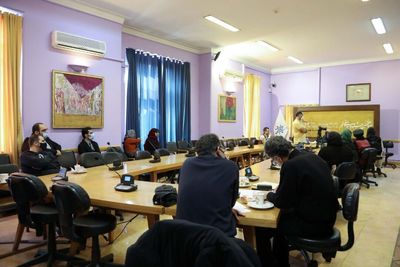The second meeting of the festival was held in the presence of prominent musicians from both countries, including Ali Tavakkoli, Farouq Rahmani and Mohammad Nasim Khoshnavaz. Ahmad Sadri and Babak Khazraei were tasked with holding this section of the festival, which was titled Rabab in Iranian and Afghan music.
Ali Tavakkoli, Rabab player, said that Rabab did not have a clear picture in the Safavid era; so, there is no informative report of the usage of the instrument in the region.
In the beginning, the most Rabab players were in fact those who played Tar or Oud; therefore, they did not have any profession in playing Rabab instrument, he noted.
Mizrab (a kind of plectrum) should be worn on first finger, while Tar players did not know it and they wore mizrab on the second finger, Tavakkoli said, adding that players changed Rabab’s plastic strings with spring strings; thus, they altered the identity of the instrument.
Farouq Rahmani, Rabab player, noted that Rabab is the main instrument in eastern Baluchistan region in Pakistan’s border area, and that poems from Amir Khosro Dehlavi are among the main poems, which are signed when artists play Rabab in Baluchistan region.
Mohammad Nasim Khoshnavaz, Afghan Rabab player, said that there are two musical styles in Herat, which belong to Master Khoshnavaz, his father, and Master Sultan Rabab.
The 37th Fajr International Music Festival is being held in commemoration of 43rd anniversary of the victory of the Islamic Revolution in two segments: competitive (Barbad Award) and non-competitive.
Different groups from neighboring countries give performances at the international festival from February 11 to 15.
Some 1,690 artists, including 1,304 men and 386 women, perform musical pieces in Tehran and 9 other provinces throughout the country.
Source: IRNA

